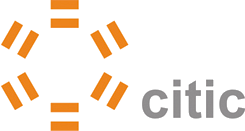CALL FOR PAPERS
Scope
The International Conference on Similarity Search and Applications (SISAP) is an annual forum
for researchers and application developers in the area of similarity data management. It aims at the
technological problems shared by numerous application domains, such as data mining, information
retrieval, computer vision, pattern recognition, computational biology, geography, biometrics, machine
learning, and many others that need similarity searching as a necessary supporting service.
The SISAP initiative (www.sisap.org) aims to become a forum to
exchange real-world, challenging and innovative examples of applications, new indexing techniques, common
test-beds and benchmarks, source code and up-to-date literature through its web page, serving the
similarity search community. Traditionally, SISAP puts emphasis on the distance-based searching, but in
general the conference concerns both the effectiveness and efficiency aspects of any similarity search
problem.
The series started in 2008 as a workshop and has developed over the years
into an international conference with Lecture Notes in Computer Science (LNCS) proceedings.
As in previous editions, a small selection of the best papers presented at the conference will be
recommended for inclusion in a special issue of
Information Systems. In October 2013, SISAP will take place in A Coruna, Spain.
Topics of interest
The specific topics include, but are not limited to:
- Similarity queries – k-NN, range, reverse NN, top-k, etc.
- Similarity operations – joins, ranking, classification, categorization, filtering, etc.
- Evaluation techniques for similarity queries and operations
- Merging/combining multiple similarity modalities
- Cost models and analysis for similarity data processing
- Scalability issues and high-performance similarity data management
- Feature extraction for similarity-based data findability
- Test collections and benchmarks
- Performance studies, benchmarks, and comparisons
- Similarity Search over outsourced data repositories
- Similarity search cloud services
- Languages for similarity databases
- New modes of similarity for complex data understanding
- Applications of similarity-based operations
- Image, video, voice, and music (multimedia) retrieval systems
- Similarity for forensics and security





